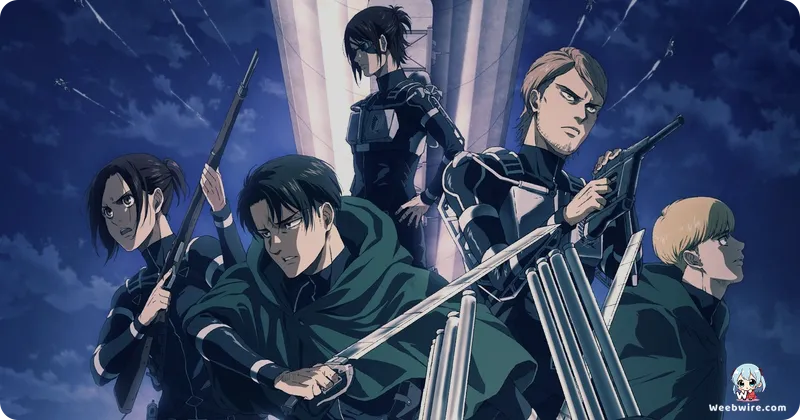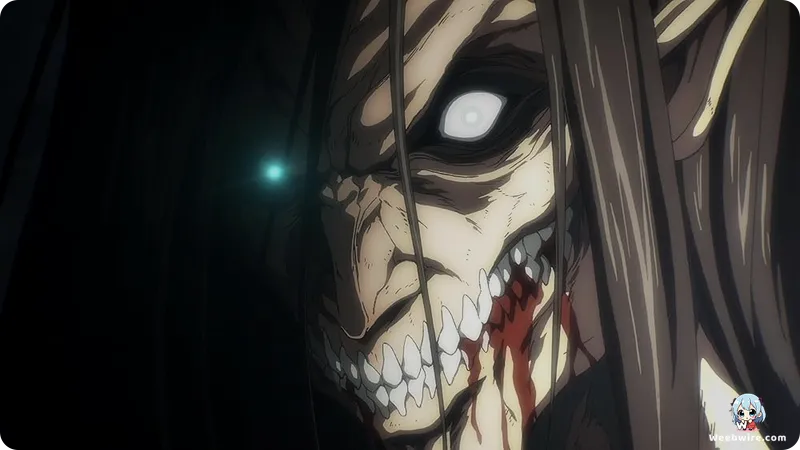The Making of a Phenomenon: Unearthing Attack on Titan's Fascinating Untold Stories

From its gripping manga debut to its monumental anime adaptation by WIT STUDIO, Attack on Titan has etched itself into the annals of global entertainment. Millions worldwide have been captivated by its visceral narrative, intricate character arcs, and groundbreaking animation. While the saga of humanity's desperate fight against the colossal, flesh-eating Titans and the unveiling of a world shrouded in enigma are widely celebrated, a treasure trove of lesser-known insights and behind-the-scenes revelations further enrich the legacy of this contemporary masterpiece. A deeper dive unearths the sophisticated layers of creative genius and unexpected muses that forged this cultural behemoth.
The Visionary Mind of Hajime Isayama
At the core of Attack on Titan's unparalleled allure lies the visionary mind of its creator, Hajime Isayama. What often eludes even dedicated fans is the stark contrast of his initial conceptualizations. Early blueprints for the manga reportedly featured an even bleaker conclusion than the divisive one eventually presented, and pivotal character roles were dramatically different. For instance, Jean Kirschtein was once envisioned as the lead protagonist. Isayama's genesis for the terrifying Titans themselves is equally startling; he once revealed their grotesque, uncanny valley aesthetic was inspired by an unsettlingly inebriated customer encountered at a net café. Moreover, the very concept of the towering defensive walls, humanity's last bastion, didn't spring from grand fantasy but from Isayama's own formative years. Growing up in a Japanese rural town encircled by mountains, he experienced a pervasive sensation of confinement, which directly translated into the fortified enclaves of Shiganshina, Trost, and Stohess. This deeply personal genesis infuses the series' foundational setting with a remarkable authenticity.
Surprising Character Origins
Character designs, too, harbor surprising origins. Eren Yeager's formidable Attack Titan form, for example, was meticulously modeled after the physique of Japanese mixed martial artist Yushin Okami. Isayama deliberately sought a powerful, almost wrestler-like build for Eren's Titan, a detail that amplifies its raw, destructive presence. Then there's Captain Levi Ackerman, a figure revered for his unparalleled combat prowess and unyielding stoicism. Despite his immense power and agility, Levi's comparatively modest stature (standing at 160 cm or 5'3") frequently sparks amusement and debate among fans, often juxtaposed with his legendary reputation. His meticulous obsession with cleanliness, a striking counterpoint to the grim realities of his world, injects a touch of endearing eccentricity into the otherwise formidable soldier.
Anime's Iconic Contributions
One of the anime's most iconic and fortuitously improvised moments centers on Sasha Blouse, affectionately known as the 'Potato Girl.' The memorable sequence where Sasha defiantly consumes a stolen potato during military drills, much to the exasperation of her superiors, was not originally conceived for the manga. This beloved scene was an anime-original contribution by WIT STUDIO's creative team, designed to instantly convey her quirky and lovable personality. Isayama himself was so enamored with the scene that he later integrated it into the manga, firmly embedding it within the series' canon. This dynamic feedback loop between manga and anime underscores the mutual respect and creative synergy often shared by creators and adaptors.
The Challenge of Animation
The breathtaking animation of the Omni-Directional Mobility (ODM) gear sequences, a defining characteristic of Attack on Titan's electrifying action, posed an extraordinary challenge for WIT STUDIO. The intricate movements, the fluid swinging dynamics, and the precise sense of weight and momentum necessitated animators to transcend conventional boundaries, frequently pioneering new techniques and relying on exceptionally skilled key animators. The outcome was a visually stunning spectacle that redefined action animation standards, immersing viewers in the exhilarating peril of soaring through ravaged cityscapes and dense forests. The sheer magnitude of the Titans and the meticulous depiction of their destruction further contributed to the anime's immersive quality.

The Power of Sound and Story
No discourse on Attack on Titan's profound influence would be complete without acknowledging its distinctive soundtrack, predominantly crafted by Hiroyuki Sawano. His singular musical style, a potent fusion of orchestral arrangements, electronic elements, and often featuring powerful German lyrics, became intrinsically linked with the series' epic scope and profound emotional depth. Compositions such as 'Vogel im Käfig' and 'Barricades' transcend mere background music; they are integral narrative components, amplifying moments of triumph, despair, and intense combat, evolving into fan favorites that resonate long after the episodes conclude.
In its formative seasons, the pervasive mystique surrounding the Titans, the true nature of the world beyond the formidable walls, and humanity's cryptic origins ignited an unprecedented surge of fan theories. Online forums buzzed with rampant speculation, ranging from elaborate time loops to fantastical alien conspiracies. The eventual revelations, particularly the existence of Marley and Eldia and the authentic history of the world, astonished many who had focused primarily on the internal conflicts within the confines of the walls. This masterful approach to world-building, incrementally revealing its profound secrets, kept audiences riveted and perpetually re-evaluating their understanding of the unfolding saga.
Real-World Echoes and Philosophical Depths
Even the architectural schematics of the walled cities drew extensively from real-world parallels. Shiganshina District, notably, bears a striking resemblance to the authentic Bavarian town of Nördlingen, a remarkably preserved medieval walled city in Germany. This commitment to realistic detail, even within a fantastical setting, imbues the harsh world of Attack on Titan with a heightened sense of tangibility and immersion. The series also deftly navigates profound philosophical inquiries, particularly the enduring concept of a 'cruel yet beautiful world.' This recurring motif compels both characters and viewers to confront harsh realities, moral ambiguities, and the indomitable human spirit in the face of overwhelming adversity. It is this masterful synthesis of thrilling action, deep character introspection, and philosophical exploration that elevates Attack on Titan far beyond a simplistic monster-fighting narrative, firmly cementing its legacy as one of the most intellectually stimulating and enduring anime of its generation.
Credits
Attack on Titan
Author
Hajime Isayama
Cover Art
Hajime Isayama
Studio
WIT STUDIO
Publisher
Kodansha
Producers





